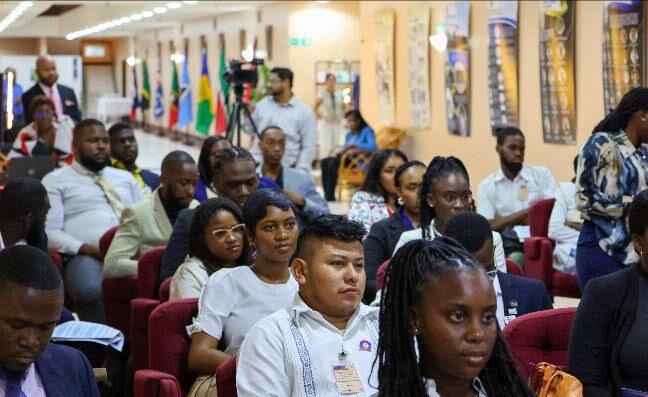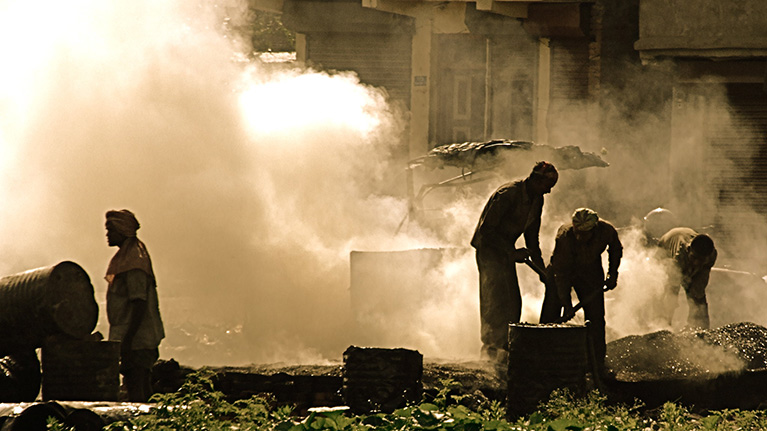NASSAU, The Bahamas, Jan 26 2017 – With the survival of CARICOM member states on the line in the face of a changing climate fuelled by greenhouse gas emissions, Guyana could have some tough decisions ahead, following the recent discovery of oil off its coast.
This is according to Dr Al Binger, interim executive director of the Caribbean Centre for Renewable Energy and Energy Efficiency (CCREEE), who suggested that the 1.4 billion-barrel discovery could perhaps not have come at a worse time.
This, as CARICOM and other Alliance of Small Island States (AOSIS) members press for keeping global temperature to 1.5 degrees Celsius above pre-industrial levels as provided for in the historic Paris Agreement.
“Limiting warming to below 1.5 degrees Celsius by 2100 requires a reduction of global greenhouse gas emissions by 70 to 95 per cent relative to 2010 levels by 2050. This is significantly deeper than the 40 to 70 per cent by 2050 for two degrees Celsius. Total greenhouse gas emissions have to reach global zero by 2060 to 2080 for 1.5 degrees Celsius compared to 2080 to 2100 for 2 degrees Celsius,” Binger explained.
“So if you are now finding plenty oil, and, basically, to keep the temperatures (down), you say no carbon fuel, then who are you going to sell it to?” he told The Gleaner at the Caribbean Sustainable Energy Forum, which ended in The Bahamas yesterday.
ZERO CARBON
“If we have to decarbonise and we have to go to zero carbon fuels, then the only carbon we could actually burn would be some portion of what we sequester. So if you have a whole heap of carbon, what are you going to do with it?” the former professor and director for the University of the West Indies Centre for Environment and Development said further.
At the same time, Binger said he foresees some difficulties with Guyana reconciling its pursuit of oil with its place in AOSIS, while admitting ignorance of the details of whatever contractual agreements there may be between Guyana and the prospector.
“(There are) some real issues as to what will be. We keep emitting carbon and now we reaching a stage where we basically can’t emit any more because there is basically no more space if we are going to stay in temperatures where we can survive,” the CCREEE boss said.
“Basically, Guyana is going to find themselves inside AOSIS, the group that is fighting to keep under 1.5 degrees Celsius, and now them is going to want to sell the carbon, which is going to get burnt. I think they are going to have a lot of head scratching to figure out, ‘is this a blessing or is this a curse?'” Binger noted.
Meanwhile, a December 2016 Bloomberg news article indicated that Exxon Mobil Corp planned to “formally approve investment in the 1.4-billion barrel Liza oil discovery” by the end of 2017.
“Exxon hired SBM Offshore NV to design a floating production and storage vessel that will handle crude pumped from the field 120 miles off Guyana’s coast …” the article noted.
“If Exxon’s board ultimately approves moving forward with the project, SBM would construct, install, and operate the vessel … . In the initial phase of development, Exxon envisions the field producing 100,000 barrels a day, Jeffrey Woodbury, vice-president of investor relations, said during an October 28 conference call with analysts,” it added. (Jamaica Gleaner)
Like our Facebook page https://www.facebook.com/CaribbeanNewsService/
Follow us on Twitter https://twitter.com/CNewsService
Follow us on Instagram https://www.instagram.com/caribbeannewsservice/




